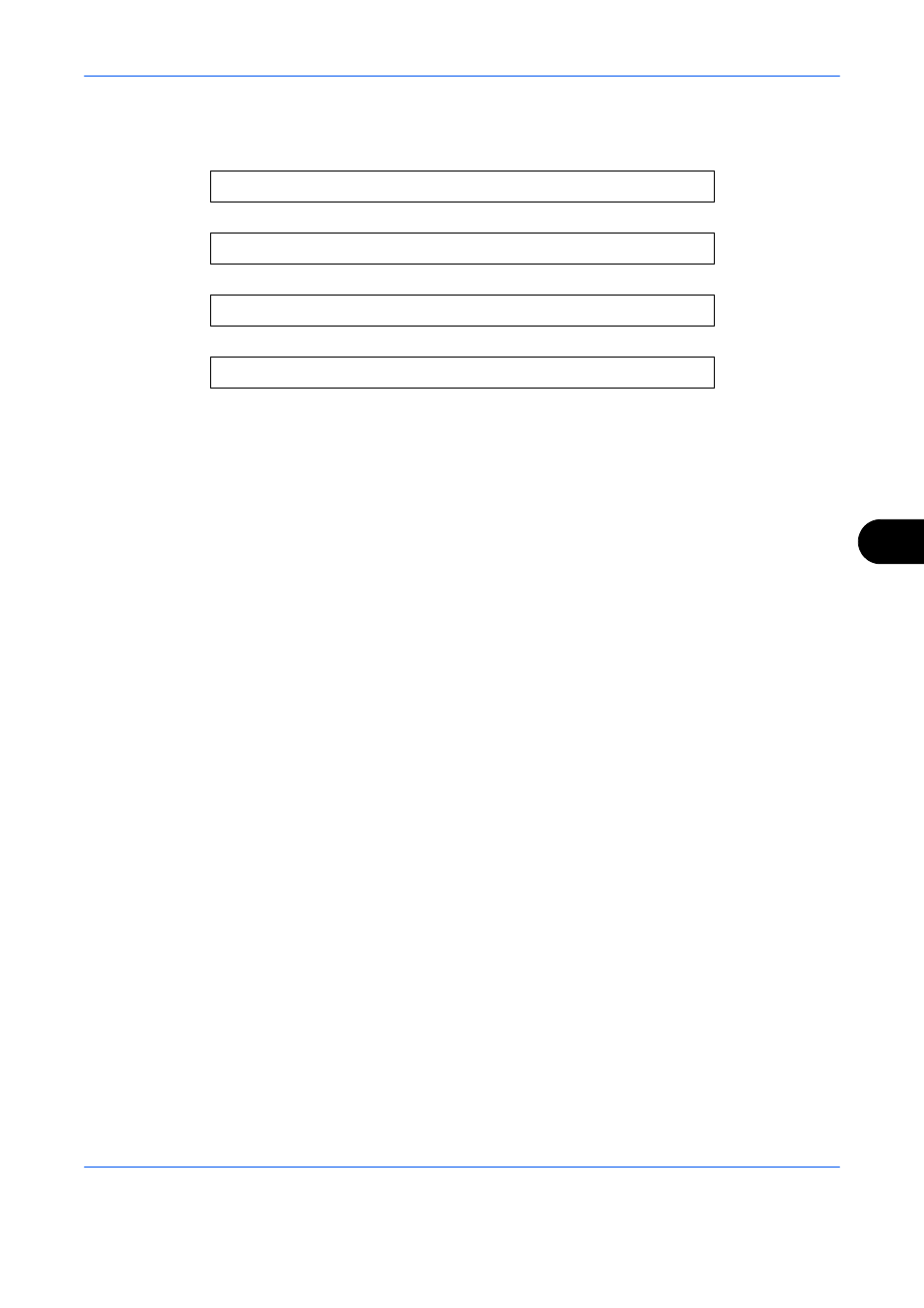I-fax reception flowchart, Notes on using i-fax, Functions not available when sending an i-fax – TA Triumph-Adler DC 2435 User Manual
Page 195: Functions not available when receiving an i-fax

Internet Faxing (i-FAX) (Option)
8-3
8
i-FAX Reception Flowchart
The procedure for receiving an i-FAX is shown below.
Notes on Using i-FAX
• To use i-FAX, you must connect this machine to a computer using a network cable and specify the network
settings. Refer to i-FAX Settings on page 8-4 for details.
• If you cannot successfully send an i-FAX to the recipient, you normally receive an E-mail error message
from the server. However, in some cases problems can arise such that you do not receive the error
message. For important faxes, you should contact the recipient to check whether the fax was successfully
received.
• Due to the low level of security in Internet communication, important documents should be faxed over a
direct telephone line.
• Communication over the Internet may take some time due to network congestion or communication faults.
Urgent faxes should be sent over a direct telephone line.
• Because Internet faxing sends the faxed originals as files attached to an E-mail message, you cannot
communicate directly with the recipient.
• You cannot have a telephone conversation via the Internet.
• The resolution, compression mode and paper sizes that you can use for transmissions are dependent on
the performance of the receiving machine. Check the specifications of the receiving machine before
sending the fax. If you do not know the specifications of the receiving machine, the recommended
transmission settings are a resolution of 200 × 200 dpi, the MH compression mode and a paper size of A4.
Functions not available when sending an i-FAX
The following functions are not available when sending an i-FAX. They are available when sending a normal
fax.
Functions not available when receiving an i-FAX
The following functions are not available when receiving an i-FAX. They are available when sending a
normal fax.
Another fax machine sends a fax to this machine’s E-mail address.
T
The mail server receives the fax.
T
This machine downloads the fax from the mail server.
T
This machine prints the received fax.
• Delayed transmission
• Encrypted transmission
• Direct transmission
• Sub address transmission
• Polling transmission
• Send restriction by registering permitted FAX numbers
• Transmission using ECM communication
• Send restriction by registering permitted ID numbers
• Reception using a sub address
• Polling reception
• Reception restriction by registering permitted ID
numbers
• Encrypted reception
• Reception rejection by registering reject FAX numbers
• Reception restriction by registering permitted
FAX numbers
• Reduced reception
